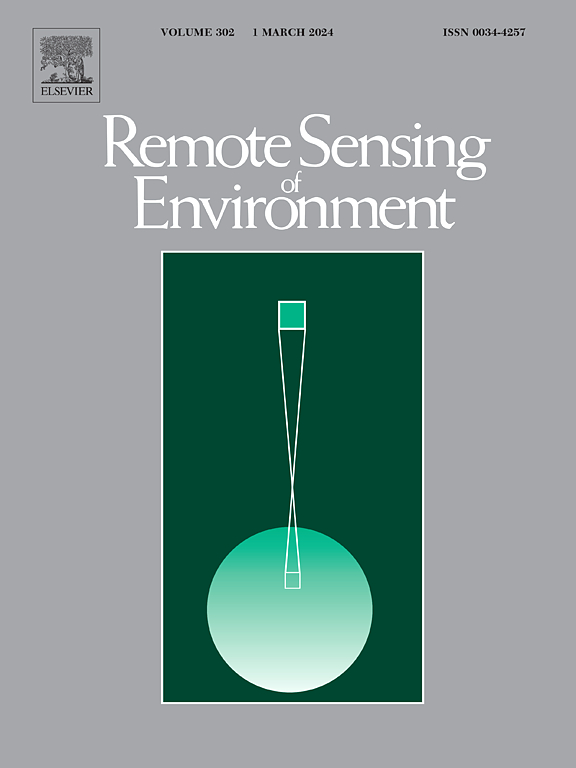Mapping the first dataset of global urban land uses with Sentinel-2 imagery and POI prompt
IF 11.1
1区 地球科学
Q1 ENVIRONMENTAL SCIENCES
引用次数: 0
Abstract
An up-to-date, detailed global urban land use map is essential for disclosing urban structures and dynamics as well as their differences across different regions. However, generating an accurate global urban land use map remains challenging due to the complex diversity of land use types and the uneven availability of data. Existing methods, which either rely solely on remote sensing imagery or treat supplementary data like point-of-interest (POI) as mandatory inputs, fail to account for regional data disparities and the complex relationships between different data modalities. In this study, we propose an urban land use mapping framework optimized with POI prompts. First, we acquire global urban Sentinel-2 imagery, POI data, and labeled LU samples from Google Earth Engine (GEE) and OpenStreetMap (OSM), and then propose a POI-Prompt Urban Land-use Mapping Network (PPUL-Net), which utilizes POI prompts to enhance classification accuracy and produce reliable predictions in those regions lacking POI data. Consequently, a global land use dataset (GULU) with a 10 m resolution in 2020 has been produced at the first time. Experimental results show that GULU has an overall accuracy of 84.59 %, demonstrating robust performance across continents. Incorporating POI data improved the accuracies for some challenging categories, such as commercial and institutional lands, by 7.32 % and 17.66 %, respectively. Additionally, using POI as prompts instead of direct pixel-level fusion with imagery increased accuracy by 2.92 %. Finally, analysis of the GULU dataset reveals that Europe and North America exhibit high land use diversity, implying mature urban structures, whereas sub-Saharan Africa and South America are predominantly characterized by residential and undeveloped areas. This dataset provides invaluable insights for urban planning, development monitoring, and sustainable development assessments.
利用Sentinel-2图像和POI提示绘制第一个全球城市土地利用数据集
最新的、详细的全球城市土地利用地图对于揭示城市结构和动态及其在不同区域之间的差异至关重要。然而,由于土地利用类型的复杂多样性和数据可用性的不均匀性,生成准确的全球城市土地利用地图仍然具有挑战性。现有方法要么完全依赖遥感图像,要么将兴趣点(POI)等补充数据作为强制输入,无法考虑区域数据差异和不同数据模式之间的复杂关系。在本研究中,我们提出了一个基于POI提示优化的城市土地利用制图框架。首先,我们从谷歌Earth Engine (GEE)和OpenStreetMap (OSM)中获取全球城市Sentinel-2图像、POI数据和标记LU样本,然后提出一个POI提示城市土地利用制图网络(pul - net),该网络利用POI提示来提高分类精度,并在缺乏POI数据的地区产生可靠的预测。因此,首次制作了2020年10米分辨率的全球土地利用数据集(GULU)。实验结果表明,GULU的总体准确率为84.59%,具有跨大洲的鲁棒性。对于一些具有挑战性的类别,如商业和机构用地,纳入POI数据的准确性分别提高了7.32%和17.66%。此外,使用POI作为提示,而不是直接与图像进行像素级融合,准确率提高了2.92%。最后,对GULU数据集的分析表明,欧洲和北美的土地利用多样性较高,意味着城市结构成熟,而撒哈拉以南非洲和南美洲则以住宅和欠发达地区为主。该数据集为城市规划、发展监测和可持续发展评估提供了宝贵的见解。
本文章由计算机程序翻译,如有差异,请以英文原文为准。
求助全文
约1分钟内获得全文
求助全文
来源期刊

Remote Sensing of Environment
环境科学-成像科学与照相技术
CiteScore
25.10
自引率
8.90%
发文量
455
审稿时长
53 days
期刊介绍:
Remote Sensing of Environment (RSE) serves the Earth observation community by disseminating results on the theory, science, applications, and technology that contribute to advancing the field of remote sensing. With a thoroughly interdisciplinary approach, RSE encompasses terrestrial, oceanic, and atmospheric sensing.
The journal emphasizes biophysical and quantitative approaches to remote sensing at local to global scales, covering a diverse range of applications and techniques.
RSE serves as a vital platform for the exchange of knowledge and advancements in the dynamic field of remote sensing.
 求助内容:
求助内容: 应助结果提醒方式:
应助结果提醒方式:


